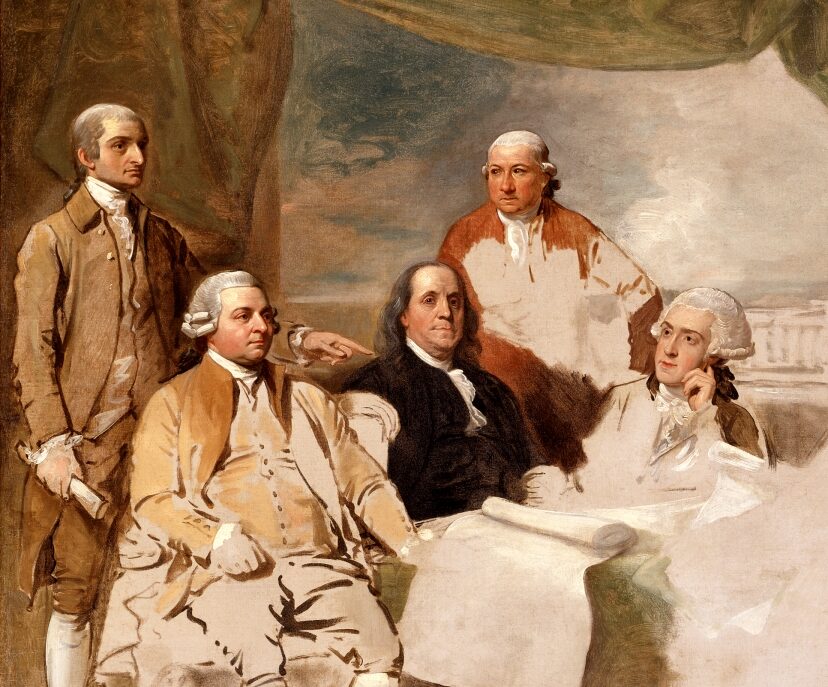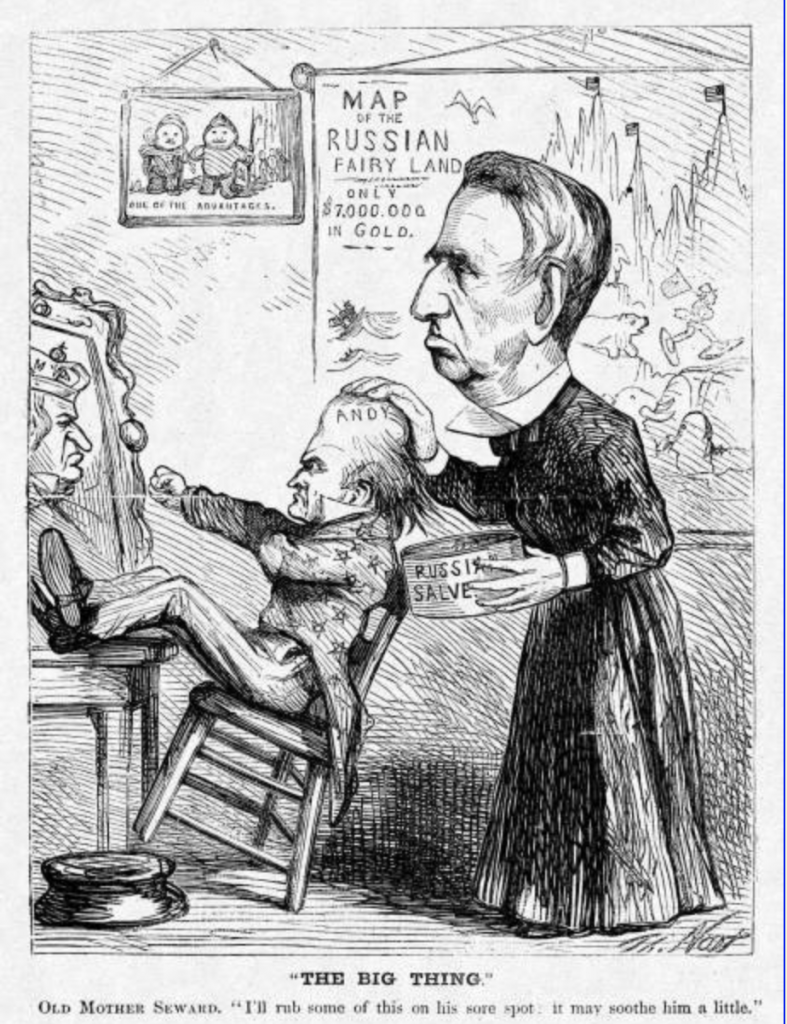“Scorned by many at the time, the purchase [of Alaska] became Seward’s greatest triumph. Eager for something to offset the administration’s domestic failures, he jumped at the chance to purchase Alaska. The price of $7.2 million was $2 million more than he wanted to pay and $2 million more than the Russians originally sought, but the secretary was in a hurry to consummate the deal; he and Russian minister Eduard Stoeckl worked until 4:00 AM to draw up a treaty. Critics dismissed Alaska as a ‘sucked orange,’ ‘Seward’s Folly,’ or Johnson’s ‘polar bear garden.’ Editor Horace Greeley called it ‘Walrussia.’ Foes of the purchase accused Johnson and Seward of trying to deflect attention from failures at home. Seward lobbied furiously and effectively, however, emphasizing the land’s commercial and strategic potential and the importance of obliging good friends like the Russians. Congress was in full revolt against Johnson by this time, and the House of Representatives out of pique threatened not to appropriate funds. While complaining about the ‘wholly exceptional’ difficulties of conducting diplomacy in the American democratic system, Stoeckl, who stood to profit handsomely from the deal, bribed key congressmen. At the time of the purchase, the main product of ‘Seward’s ice box’ was indeed ice, sold in large quantities to the bustling communities along the West Coast. More quickly than anyone might have imagined, the secretary’s vision was vindicated, his prize acquisition, like California earlier, bringing the added bonus of gold.” –Herring, From Colony to Superpower, p. 258
Discussion Questions
- Herring’s summary of the value underlying the Alaskan purchase requires a good deal of background or context knowledge about US-Russian relations and American domestic politics in the Reconstruction era. What are some of the key contextual factors that made “Seward’s Folly” possible in 1867?
- Herring calls the Alaskan purchase as William Henry Seward’s “greatest triumph” as US secretary of state. Earlier in the chapter, he also suggested that “Seward now ranks among the nation’s best secretaries of state” (228). What do consider to be Seward’s most impressive accomplishments and traits as a diplomat, or do you find yourself unpersuaded by Herring’s high praise?


Leave a Reply